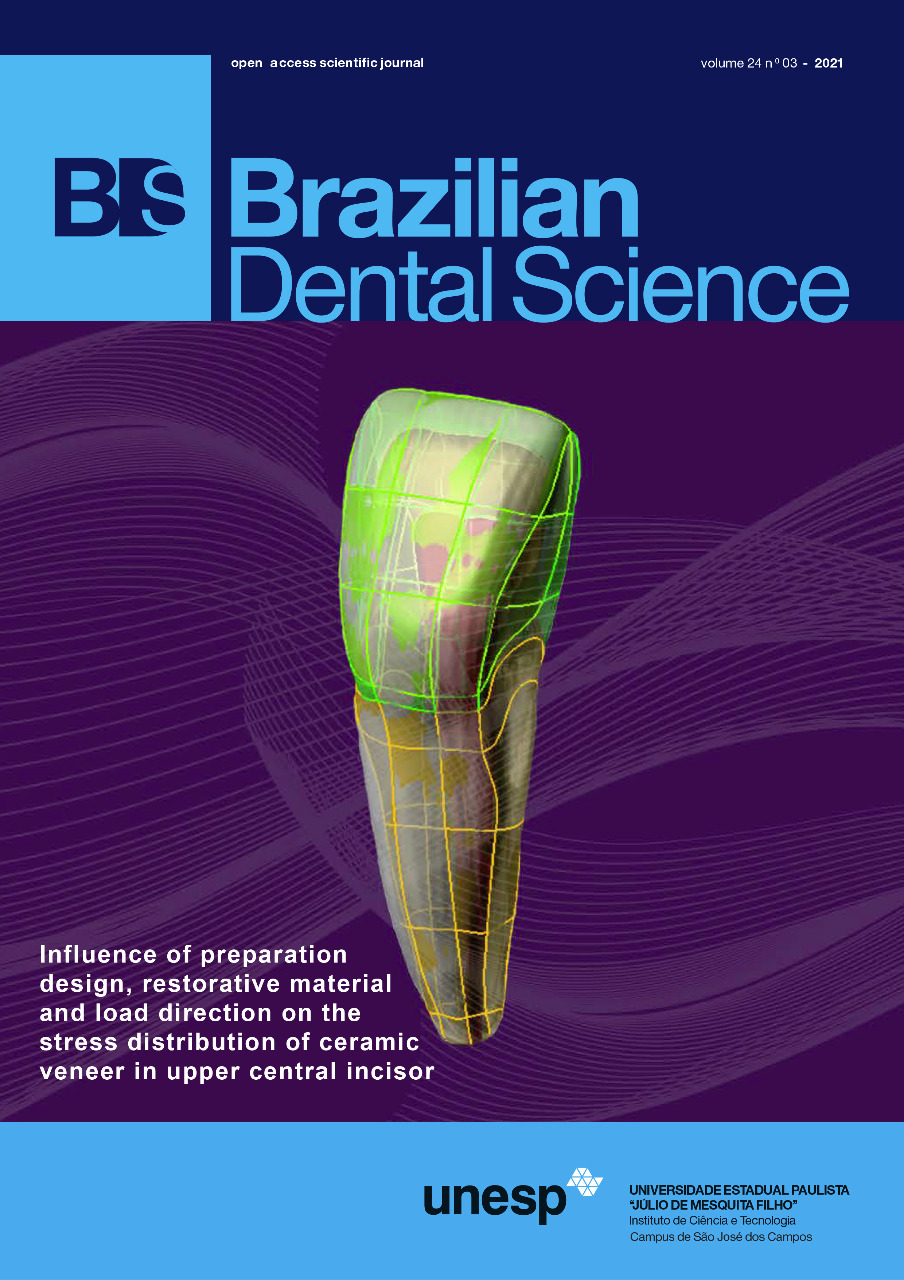Effect of Thermo-Mechanical Aging and Repressing on Fracture Resistance of Lithium Disilicate Crowns
DOI:
https://doi.org/10.14295/bds.2021.v24i3.2545Abstract
Objective: The recycling of heat pressed lithium disilicate glass-ceramic leftover material has been reported to be done by dental laboratories. The effect of this procedure on the fracture resistance of single crowns is unknown, especially when it is functioning inside the oral cavity with subsequent exposure to temperature changes and cycles of mastication. Material and Methods: A total of 28 lithium disilicate glass-ceramic crowns (IPS emax Press) were constructed and randomly assigned into two groups (n = 14); Group (P): Included crowns fabricated from new e.max ingots. Group (R): Included crowns fabricated from repressed e.max buttons. Specimens of each group were divided into two equal subgroups (n = 7) according to whether the aging of specimens will be performed or not before fracture resistance testing. Subgroup (N), samples were subjected to fracture resistance without thermo-mechanical aging, while subgroup (A), samples were subjected to thermo-cycling and cyclic loading before being subjected to fracture strength testing. Different methods; SEM, XRD, EDAX were used to characterize the properties of lithium disilicate glass-ceramics before and after repressing. Results: The highest statistically significant fracture resistance value was recorded for the subgroup (RN) repressed/non-aged, followed by the subgroup repressed/aged (RA), while the lowest statistically significant mean value was recorded for the subgroup pressed/aged (PA). There was no significant difference between pressed/non-aged (PN) and repressed/aged (RA) subgroups. Conclusion: Repressing of leftover buttons may increase the fracture resistance of IPS emax Press crowns. Thermo-mechanical aging may negatively affect the fracture resistance of IPS emax Press crowns, yet Repressing may decrease this effect. Clinical implications: This is a novel approach that targets a point of research that has not been investigated before. It elaborates how repressing may decrease the effect of aging and increase the fracture resistance of lithium disilicate crowns. Thus, recycling of lithium disilicate glass ceramics might decrease its failure and prolong their serviceability.
Keywords
Fracture resistance; Heat pressed; Lithium disilicate; Recycling; Repressing; Thermo-mechanical aging.
Downloads
Downloads
Published
How to Cite
Issue
Section
License
Brazilian Dental Science uses the Creative Commons (CC-BY 4.0) license, thus preserving the integrity of articles in an open access environment. The journal allows the author to retain publishing rights without restrictions.
=================




























